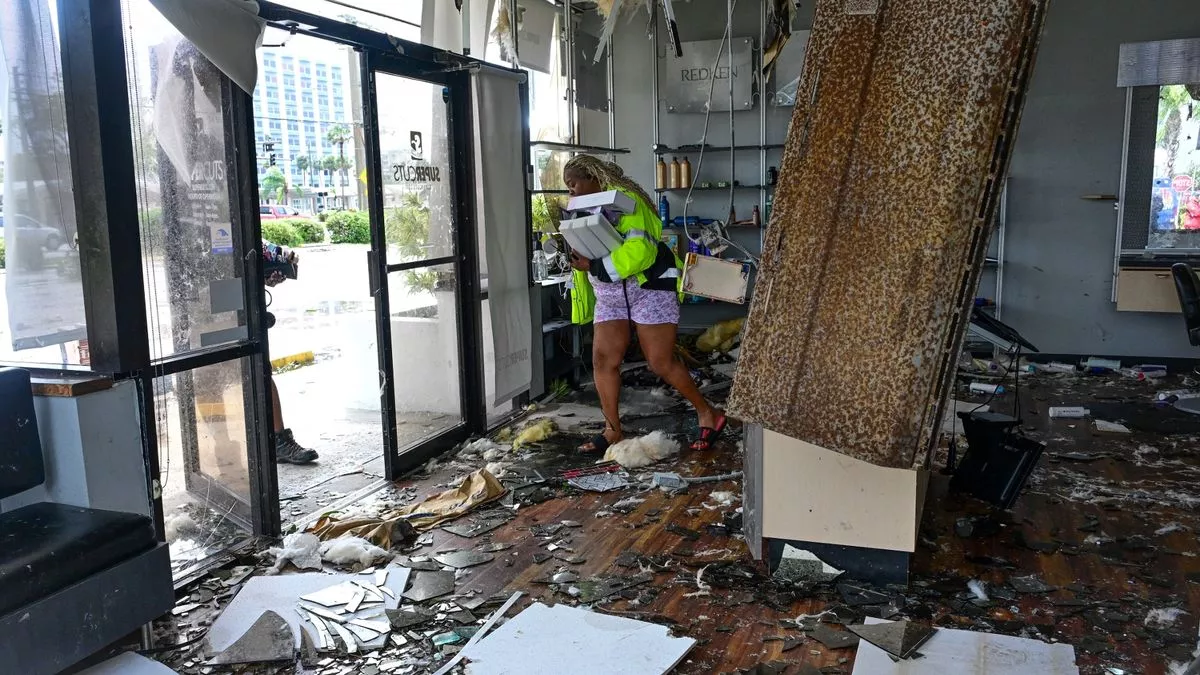Hurricane Milton smashed into Florida yesterday, leaving a trail of death and destruction in just hours as at least nine people are dead in St. Lucie County and elsewhere in the storm’s path, leaving 3 million without power across the state

An employee collects some of their belongings from a beauty salon that was destroyed by the intense tornado that hit Cocoa Beach, Florida, the day after Hurricane Milton swept through the state (
Hurricane Milton touched down on the Florida coast, killing at least 13 and leaving over 3 million individuals without power as the storm brought 120 mph winds when it struck as a Category 3 storm.
It’s now a post-tropical cyclone, boasting wind speeds of 75 mph as it moves over the Atlantic Ocean just east of Florida’s coastline near Orlando. That’s high enough for Category 1 status, but it mixed with a cold front over the Atlantic, knocking it down to its current status, per the National Hurricane Center.
All residents of Seminole, Broward, and Tampa Counties were told to evacuate days ago. Now that the hurricane has passed over Florida, people can return – however, many homes were damaged and remain without power, so its unclear when people will be able to return.
Yesterday, the state recorded 27 official tornadoes touching down as a result of Milton. St. Lucie County was the first to report fatalities after a devastating tornado smashed through their town. Four people are reportedly dead from tornadoes that touched down there. During a terrifying 25-minute period, as many as three touched down.
Milton stunned meteorologists after it quickly strengthened from a tropical storm with wind speeds under 40 mph into a powerful Category 5 hurricane that’s been labeled one of the four strongest in Atlantic hurricane history.
It has since weakened into a Category 4 hurricane and is now considered a Category 1 as it makes its way east over the Florida Peninsula. The last update on the National Hurricane Center’s website indicated sustained wind speeds of 75 mph. By comparison, the requirements for a Category 5 storm include sustained wind speeds of at least 157 mph.
Milton comes on the tail end of Hurricane Helene, which devasted other parts of Florida, killing 230 total in the state and in Georgia and the Carolinas. Several died when Helene knocked trees and other debris into their homes and vehicles, and Milton is expected to be worse in terms of damage.